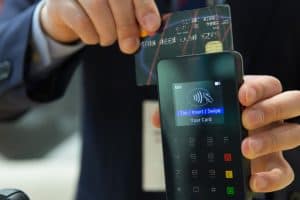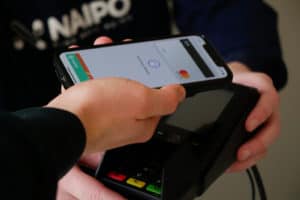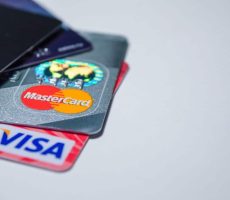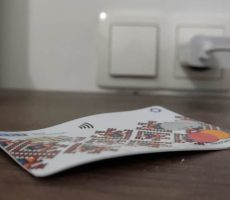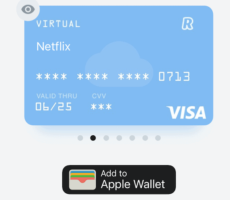ATM can swallow your card for various reasons, but it doesn’t mean they’re forever lost. Here’s when it happens, and what can you do.
If you leave your card or the money at the ATM, it will be swallowed by the machine in about 15-30s and retained until the end of the day, or the next morning. If that happens, you need to contact your bank or the owner of the ATM, to get it back or to request the new one.
The time it takes for the ATM to eat your card will depend on the ATM itself, and the status of your card/bank account. Some ATMs are programmed to take the card very fast, while others won’t give you money until you’ve taken your card first.
The ATM card is retained in the ATM until the maintenance personnel takes it out, and it will be either saved for you to retrieve it, or shredded immediately, depending on the bank to which the ATM belongs.
Why Do ATMs Eat Cards?
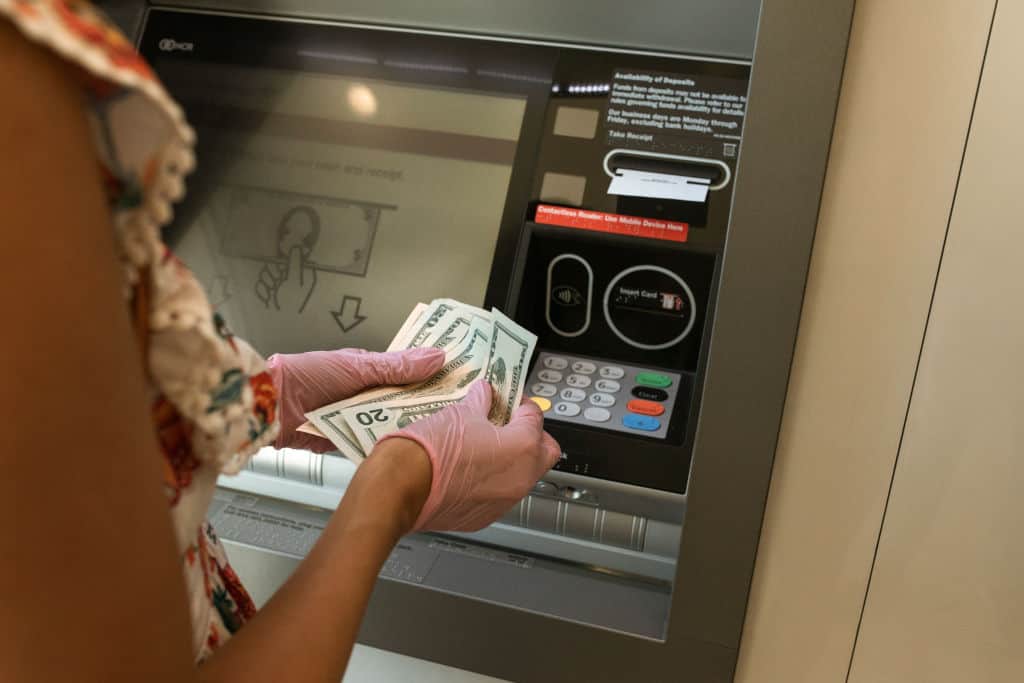
ATMs eat cards mostly because of security, to protect you from unauthorized withdrawals or access to your account. This proactive mechanism, although occasionally frustrating, reduces the chance of fraud, especially in high-traffic areas.
ATMs will swallow cards for several reasons:
- You entered your PIN 3 times incorrectly
- You forgot your card at the ATM so the ATM retained it
- Your card or bank account has been flagged by your bank
- An error occurred in an ATM and it froze/rebooted
- Too many transactions in a short amount of time
- An ATM has been hacked
Most of the times people simply forget their debit card at the ATM. If that’s the case, most ATMs will simply retain the card which you can get back from the institution the ATM belongs to, assuming your card hasn’t been shredded in the meantime.
One of the best ways you can do to protect yourself is to use contactless ATMs. Bank of America, Chase, Wells Fargo, and US Bank all have contactless ATMs all over the states. Contactless ATMs minimize physical touchpoints, crucial not just for security but also for public health in times like a pandemic.
Try to use contactless ATMs
If you don’t have those available, make a switch from physical cards to virtual cards. A layer of security you get from virtual cards goes beyond contactless or any kind of physical payment option.
You can generate an unlimited number of these cards through an app, limit the number of uses or the amount of money spent, and then pay, receive or send money through it.
Does an ATM eat your card if you forget it?
Most ATMs will eat your card and suck it back in, which is then later retrieved at the end of the day, or the next morning. Keep in mind that some banks will shred these cards unless you’re a customer at that bank, so try to resolve this issue quickly.
What happens if you exceed your PIN tries at an ATM?
Depending on the ATM and the type of card, if you exceed your allowed PIN tries your card will either be automatically blocked for 24h, or it will be retained by the ATM with the message that you should contact your card issuer.
If it was retained but not blocked, then it will remain there until you resolve this issue with your bank or card issuer. You are allowed to enter the PIN 3 times, which means that the 3rd time needs to be the correct one.
If you miss the 3rd time as well, your card will be taken and you’ll need to either contact the bank to which the ATM belongs or your own bank to issue a new card and block the other.
What to Do When ATM Eats Your Card?
If the ATM ATM ate your card while giving you a message that it did, or it turned off, then you should contact the bank to which the ATM belongs. If it’s a bank right next to it, go right in and talk to the manager or the teller behind the counter. Keep the receipts if you have any.
Your bank will usually refund you immediately, though sometimes the refund can take some time.
If an ATM isn’t near a bank (such as a gas pump) you should ask the person responsible for the ATM to call a technician to get your card out. If they refuse, you should call the police. You’ll probably have to wait until the end of the business day or the next morning to get the card regardless of the ATM’s location.
While talking to your bank (card issuer) you need to prove to them that you own this card, and you should give them all the necessary information such as the time of using the ATM and the location, your name, etc. The easiest way out of this is by giving them the receipt if you have one.
There should also be a number on the ATM for you to call if there are any problems.
What if an ATM took your card for security reasons?
If the ATM took your card with the message that it’s for security reasons, you should call your bank immediately or visit the bank next to the ATM you’re withdrawing from, or depositing into. There’s a chance your card will be shredded, so try to solve this quickly.
To protect yourself, don’t enter your pin at shady ATMs, such as gas stations. Even better, don’t use your debit card, period. It’s the least secure way to purchase anything. Use virtual debit cards to protect yourself, and to increase security.
Protect yourself by using virtual cards
What to do if your card is blocked by the ATM?
If your card was blocked by the ATM you should contact your bank as soon as possible to get your card unblocked, or request a new card. You should do it soon because there’s a possibility of a bank shredding your card if you’re not a customer at the ATM’s bank.
Can you still transfer money if your card is blocked?
If your card is locked or blocked, you can’t withdraw or deposit with it. However, you may still be able to make withdrawals and deposits to your account by going into the bank directly and asking a teller behind the counter to deposit or withdraw.
Your card, either debit or credit card, is just a way to access your bank account. You can still access your account by logging in online, going to the bank directly, or depositing cash by using your phone’s app. Some apps have the option to deposit cash by using a code from your phone’s app to use as confirmation with the ATM.
Do ATMs Shred Cards?
Most ATMs won’t shred your card if they swallow them up. They’ll just hold them in a collecting tray so that they can be retrieved later on. However, some ATMs do shred cards, and this will depend on the bank and how the ATM is programmed.
Cards are shredded by some ATMs if such an ATM eats your card at a bank where you’re not a customer. Some banks may do this because they won’t have an address to send them back to for non-customers.
Banks may also shred your card for your own protection. For example, if you keep forgetting your card in an ATM, the first time they may give it back to you, but keep doing it and they’ll eventually cut your card to protect you from getting your card stolen.
What to Do if an ATM Shuts Down During a Transaction?
When an ATM shuts down you should either visit or call your bank or ask someone where the ATM is located to call for a tech to get your card retrieved. Keep in mind that if the ATM boots up again, it may give you your card back automatically.
However, if the ATM doesn’t spit out your card, your bank might mark it as lost or stolen, in which case you should ask for a new card and they’ll give you a new one for free. You may be credited the amount and receive the follow-up once they investigate the issue.
Your bank will almost always give you a refund for the transaction if you were credited but it didn’t go through. If you’ve made a transaction and the ATM shut down, it may take a few days because you have to wait for the transaction reversal.
How do I get my money back from a failed ATM?
You should contact your bank and explain what happened by providing details of the time and date of the attempted withdrawal/deposit and the location of the ATM. Keep your receipt if you got one and you should get refunded within a week.
If the bank refuses to refund you, then the only thing you can do is file a CFPB complaint.
You can also file a police report, which can strengthen the case with the bank, and it helps ensure the bank that you aren’t trying to commit fraud. You can also file a police report if you think your card details might have been stolen.
What Happens if You Don’t Take Money From an ATM?
If you don’t take the money from an ATM, most ATMs will wait about 15-30 seconds, and then it will gobble the money back up. In most cases, you’ll be automatically refunded. Just in case, you should call or visit your bank and explain what happened.
What happens if my money gets stuck in ATM?
If the money gets stuck in an ATM during a transaction, you should go to your branch and file a dispute for lost ATM funds. If you got any receipts you should keep them, but you can file a complaint without it simply over the phone.
The bank has 10 business days to conclude its investigation, and it usually ends in your favor. Oftentimes it ends up being inconclusive and they’ll just credit your account anyway.
When they open the machine it’s either going to be over in the balance, or the money will be jammed so they’ll call a technician to fix it. Some modern ATMs have self-correction mechanisms that attempt to rectify internal errors, but this isn’t foolproof.
There’s also no point in counting the money in front of the camera because the ATM camera isn’t watching your hands, to begin with, nor will anyone trust you counting anything. It doesn’t prove a thing because you could be counting fake bills, depositing different denominations, etc.
Here are some Dos and Don’ts when dealing with deposits through ATMs and what to do if the ATM makes a mistake:
Do ATMs Ever Make Mistakes?
ATMs rarely make mistakes, but they can happen. Withdrawing money encounters fewer mistakes than, for example, depositing cash to an ATM. Some ATMs have a 2-3% chance to miscount your cash deposit, so make sure to count every time.
Computers rarely make mistakes, so they usually happen because of human error. Either because the maintenance person made a mistake, the bills got stuck together, or someone tried to hack the ATM.
If you believe an ATM made a mistake, you should go to your local branch with the receipt or call the customer service number for your bank. They will investigate the issue, and may even refund you immediately until the matter is resolved.




